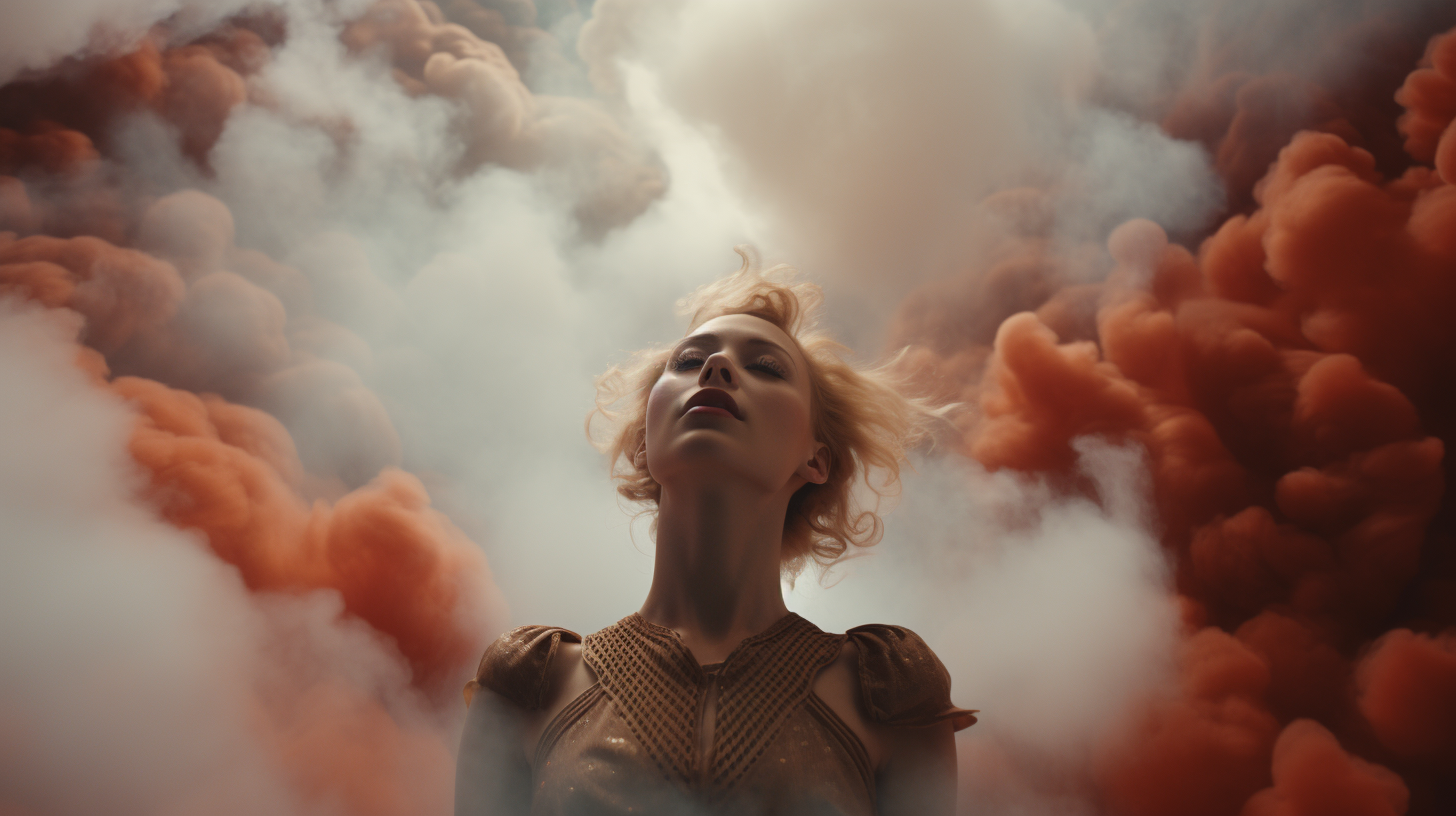Have you ever woken up from a dream feeling like it was just as real as your everyday experiences? I sure have. It’s truly bizarre to feel like a dream actually happened, even though it didn’t. What makes dreams sometimes feel so vivid?
I’m fascinated by the science of dreaming and the different theories about why we dream and how our brains process these experiences. In this article, I’ll explore some of the latest research on dreaming, including the different types of dreams, the emotional connection we have to them, and the role of memory processing and sensory experiences in shaping our dream worlds.
The study of dreaming is a complex and multi-disciplinary field that draws on psychology, neuroscience, and cultural studies. Scientists have been trying to understand the phenomenon of dreaming for centuries, but there is still much we don’t know about this mysterious aspect of human consciousness. Some researchers believe that dreams are simply random neural firings in the brain, while others argue that they serve an important psychological function, allowing us to process emotions and memories in a safe and controlled way.
Whatever your perspective on dreaming, there’s no denying that it’s a fascinating and often perplexing aspect of human experience. So, let’s dive into the world of dreams and try to unravel some of the mysteries behind why they sometimes feel so real.
Key Takeaways
- Dreams can feel real due to intense brain activity, emotional processing, and lack of critical thinking during REM sleep.
- Dreams reflect subconscious thoughts, fears, and desires, providing insight into our emotions.
- Emotions in dreams can be as intense as those in waking life, and intense emotions can be a sign of unresolved issues or traumas.
- Sleep disorders can influence dream content and quality, causing dreams to feel more real and memorable.
The Science of Dreaming
You’re probably wondering why you sometimes feel like your dreams are more real than reality itself. Well, the science of dreaming might just have the answer.
When we fall asleep, our brain goes through different stages of sleep, and during the Rapid Eye Movement (REM) stage, the brain becomes highly active and our dreams start to become more vivid and intense. This is because during REM sleep, the brain is processing and consolidating information from our daily experiences, memories, and emotions, and creating a virtual reality experience.
Moreover, during REM sleep, the brain also inhibits the activity of the prefrontal cortex, which is responsible for logical thinking, decision-making, and self-awareness. This means that when we dream, we are not able to question or doubt the reality of the dream, and we accept it as real.
Therefore, the combination of intense brain activity, emotional processing, and lack of critical thinking make our dreams feel so real sometimes.
Speaking of dreams, let’s explore the different types of dreams and their meanings.
The Different Types of Dreams
Ah, the myriad of nocturnal musings that transport us to alternate realms of consciousness. Dreams come in different shapes and sizes, and each type has its own distinctive features. Some dreams are vivid and memorable, while others are fleeting and forgettable. To better understand why dreams feel so real sometimes, let’s explore the different types of dreams we experience.
According to the American Sleep Association, there are five main types of dreams: normal dreams, lucid dreams, nightmares, recurring dreams, and night terrors. Normal dreams are the most common type of dream and can involve anything from mundane activities to fantastical scenarios. Lucid dreams, on the other hand, occur when the dreamer becomes aware that they are dreaming and can take control of the dream’s content. Nightmares are intense and scary dreams that can cause feelings of fear and anxiety. Recurring dreams are dreams that repeat themselves over time and may be linked to unresolved issues in the dreamer’s waking life. Lastly, night terrors are a type of parasomnia that involves waking up in a state of panic and confusion. By understanding the different types of dreams, we can start to unravel the mystery of why some dreams feel so real.
As we delve deeper into the science of dreaming, it becomes clear that there is a strong emotional connection between our dreams and our waking lives. Dreams often reflect our subconscious thoughts, fears, and desires, and can provide insight into our deepest emotions. In the next section, we will explore this emotional connection in more detail and learn how our dreams can help us better understand ourselves.
The Emotional Connection
As we explore the emotional connection between our subconscious thoughts and our dreams, it becomes evident that our nocturnal musings can provide us with valuable insights into our deepest desires and fears.
Dreams can be incredibly vivid and intense, often leaving us with a lingering emotional impact that carries over into our waking lives. These emotions can range from joy and elation to fear and anxiety, and they can serve as a reflection of our internal struggles and conflicts.
When we experience intense emotions in our dreams, it’s often a sign that our subconscious is attempting to work through unresolved issues or traumas. By confronting these emotions in a safe and controlled environment, we’re able to process them more effectively and gain a deeper understanding of ourselves.
In the next section, we’ll explore how our dreams also play a crucial role in memory processing, further highlighting their importance in our overall well-being.
Memory Processing in Dreams
Memory processing during sleep is a natural and essential function of the brain, in which our dreams play a crucial role. During REM sleep, the brain is highly active and is consolidating memories, sorting through experiences, and integrating new information into existing knowledge.
Dreams are a reflection of this process, and they often feature elements from our daily lives, including people, places, and events. Interestingly, research has shown that dreams can also aid in problem-solving and decision-making.
Dreams provide a safe space for the brain to explore different scenarios and potential outcomes, without the consequences of real-life actions. This allows the brain to process and analyze information in a unique way, leading to novel solutions and insights.
As we move into the next section about sensory experiences in dreams, it’s important to note that the brain’s processing of sensory information during sleep is also a key factor in creating vivid and lifelike dream experiences.
Sensory Experiences in Dreams
Immerse yourself in the world of your dreams by exploring the vivid and lifelike sensory experiences that your brain processes during sleep. It’s not just the images that our minds conjure up; we can also feel, hear, taste, and smell things in our dreams. In fact, studies have shown that the brain regions responsible for processing sensory information are highly active during REM (Rapid Eye Movement) sleep, which is when we experience the most intense and memorable dreams.
Here is a table that summarizes the different sensory experiences that can occur in dreams:
| Sensory Experience | Description |
|---|---|
| Visual | Seeing images, colors, and shapes |
| Auditory | Hearing sounds, voices, and music |
| Olfactory | Smelling scents, such as food or flowers |
| Gustatory | Tasting flavors, such as sweet or sour |
| Tactile | Feeling textures, such as soft or rough surfaces |
As you can see, our dreams can engage all of our senses, creating a vivid and immersive experience. This is why dreams can feel so real, as if we are actually living in the moment. However, the relationship between dreams and reality is complex and multifaceted.
The Relationship Between Dreams and Reality
You may have heard the saying ‘reality is merely an illusion, albeit a very persistent one,’ and this adage holds true when exploring the relationship between dreams and reality. Dreams can feel so real because they often mimic our experiences in waking life, using familiar settings, people, and situations. Furthermore, during REM sleep (the stage of sleep where most dreams occur), our brain activity is similar to when we’re awake, which can contribute to the vividness and realism of our dream experiences.
Here are some other factors to consider when exploring the relationship between dreams and reality:
- Emotions felt in dreams can be just as intense as those experienced in waking life
- Dreams can offer insight into our subconscious thoughts and desires
- The content of dreams can be influenced by our daily experiences and stressors
- Lucid dreaming (when a person is aware they’re dreaming and can control their dream) can blur the lines even further between dreams and reality.
As we delve deeper into the topic of dreams, it’s important to also consider the role of sleep disorders in influencing our dream experiences.
The Role of Sleep Disorders
If you’re experiencing trouble sleeping, it’s possible that sleep disorders may be influencing the content and quality of your dreams. For instance, people who suffer from sleep apnea or insomnia are more likely to have vivid and intense dreams.
This happens because these disorders disrupt the normal sleep cycle and prevent the brain from entering the deep stages of sleep where dreaming occurs. As a result, the brain compensates by producing more dream activity during the lighter stages of sleep, which can cause dreams to feel more real and memorable.
Moreover, sleep disorders such as narcolepsy can also affect the way we experience dreams. People with narcolepsy tend to enter REM sleep more quickly and frequently than others, which means they have more opportunities to dream.
This can result in a higher frequency of nightmares and lucid dreams, where the dreamer is aware that they are dreaming and can control the content of their dreams. Understanding the effects of sleep disorders on dreaming can help us better interpret and cope with the content of our dreams, and may also lead to new treatments for sleep-related problems.
With that said, let’s now explore the cultural and historical perspectives on dreaming.
Cultural and Historical Perspectives on Dreaming
I find it fascinating to look at how different cultures and societies have viewed dreams throughout history.
In Indigenous cultures, dreams have often been seen as a way of communicating with the spirit world.
In ancient civilizations such as Egypt and Greece, dreams were thought to have prophetic meanings and were often interpreted by priests or seers.
And in modern times, dreams have been a common theme in literature and art, often used to explore the subconscious and the human psyche.
It’s amazing how much our understanding of dreams has evolved over time.
Dreaming in Indigenous Cultures
When dreaming in Indigenous cultures, it’s believed that the dream world and waking world are interconnected and that dreams have significant meaning in guiding one’s life.
Dreams are seen as a way for the spirit world to communicate with the living, and it’s believed that one can receive guidance and wisdom from ancestors and spirits during their dreams.
In some cultures, dream interpretation is a sacred practice that’s passed down from generation to generation.
In many Indigenous cultures, dreams are also seen as a way to connect with the natural world and the universe.
For example, the Ojibwe people believe that dreams can reveal messages from the spirit world about the balance and harmony of nature.
Dreams are also seen as a way to communicate with animals, plants, and other elements of the natural world.
This deep connection between dreams and the natural world highlights the importance of respecting and protecting the environment.
Moving on to the next section about ‘dreaming in ancient civilizations’, it’s interesting to note that many ancient cultures also placed great importance on dreams and their meanings.
Dreaming in Ancient Civilizations
Throughout history, numerous civilizations, including the Egyptians, Greeks, and Romans, believed that dreams were messages from the gods and had the power to predict the future.
In ancient Egypt, dreams were considered as a way for the gods to communicate with their people. Egyptians believed that dreams were a way for the soul to leave the body and travel through various realms, including the afterlife. They also believed that dreams had a prophetic nature and could reveal important information about the future.
The Greeks and Romans also placed great importance on dreams. They believed that dreams were a source of divine inspiration, and many important decisions were made based on the interpretation of dreams. In fact, some of the most famous stories in Greek and Roman mythology, such as the story of Achilles and the Trojan War, were inspired by dreams.
Dreams played a significant role in shaping the beliefs and practices of ancient civilizations, and their influence can still be felt in modern society. In fact, dreams continue to inspire artists and writers in their works, as we’ll see in the subsequent section about dreams in modern art and literature.
Dreams in Modern Art and Literature
As I delved deeper into the history of dreaming, I couldn’t help but wonder how the concept of dreams has evolved over time.
From ancient civilizations to modern times, dreams have always been a topic of great interest to artists and writers alike.
In fact, dreams have been a source of inspiration for many works of art, literature, and even music.
In modern art and literature, dreams have been used to explore the depths of the human psyche, to express emotions and ideas that may be difficult to articulate in waking life.
From surrealist painters like Salvador Dali to writers like Franz Kafka and Haruki Murakami, dreams have been a recurring theme in many works of modern art and literature.
It’s fascinating to see how artists and writers have used dreams to create new worlds, to challenge our perceptions of reality, and to delve into the mysteries of the human mind.
As we look to the future of dream research, it’s clear that there’s still much to learn about this mysterious phenomenon.
While we’ve made great strides in understanding the science behind dreams, there’s still much we don’t know.
With advances in technology and new research methods, we may one day unlock the secrets of the dreaming brain and gain a deeper understanding of the role that dreams play in our lives.
The Future of Dream Research
You might be thinking, “Why should I care about the future of dream research?”
Well, let me tell you, advancements in this field could lead to a better understanding of why our dreams feel so vivid and real, potentially unlocking a deeper understanding of our subconscious minds.
As we learn more about the brain and how it functions during sleep, we can begin to unravel the mystery of why dreams feel so real sometimes.
One promising area of research involves using brain imaging technology to study the activity of the brain during sleep. By monitoring brain waves and activity, scientists hope to identify patterns that correspond to different types of dreams.
This could allow us to better understand the neural processes that create and shape our dreams, and perhaps even develop methods to control or influence them.
While the future of dream research is still uncertain, it’s clear that continued advancements in this field hold great potential for enhancing our understanding of the human mind.
Frequently Asked Questions
Can dreams predict the future?
No, I don’t think dreams can predict the future. While they can feel vivid and meaningful, they are ultimately products of our subconscious minds and not a reliable source of foresight.
Why do some people have recurring dreams?
Did you know that 60% of adults have recurring dreams? As someone who experiences them often, I believe they stem from unresolved emotions or situations. Therapy and journaling can help alleviate them.
Do animals dream?
Still, research shows that animals like dogs, cats, and even rats experience similar brain activity during sleep as humans do during dreaming.
Can dreams cause physical pain or sensations?
Yes, dreams can cause physical pain or sensations. I once dreamed I was falling and when I woke up, my heart was racing and my body felt tense. This is due to the brain’s ability to create realistic sensations during dreams.
Why do some people never remember their dreams?
I never remember my dreams because I don’t get enough sleep or wake up abruptly. Stress, alcohol and medications can also affect dream recall. However, some people may naturally have a weaker dream memory.
Conclusion
As I lay in bed and reflect on my vivid dream from last night, I can’t help but wonder why dreams sometimes feel so real.
The science of dreaming suggests that while we sleep, our brains are hard at work processing memories and emotions. But what about the sensory experiences in dreams? How can they feel just as real as waking life?
On one hand, dreams can be incredibly powerful tools for personal growth and self-discovery. On the other hand, sleep disorders can disrupt the natural process of dreaming, leading to negative consequences.
As we continue to explore the relationship between dreams and reality, it’s important to remember the cultural and historical significance of dreaming.
The future of dream research holds countless possibilities for unlocking the mysteries of the mind.










